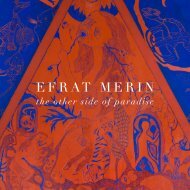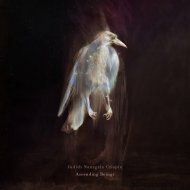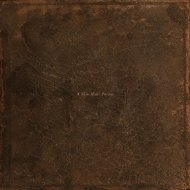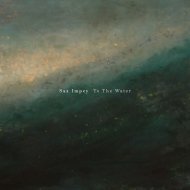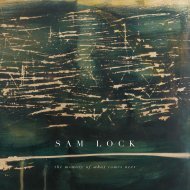Simon Averill 'Splitter'
Publication for 'Splitter' by Simon Averill at Anima Mundi
Publication for 'Splitter' by Simon Averill at Anima Mundi
Create successful ePaper yourself
Turn your PDF publications into a flip-book with our unique Google optimized e-Paper software.
S I M O N A V E R I L L
S P L I T T E R
Reactor<br />
55 x 81 cm<br />
acrylic on panel<br />
2
‘I’m trying to imagine light as something tangible; as if you could pick it up and hold it in the palm of your hand; this is the<br />
territory where what has been seen, memory and the imagined co-exist’.<br />
<strong>Simon</strong> <strong>Averill</strong>. 2014<br />
<strong>Simon</strong> <strong>Averill</strong>’s paintings re-consider what might take place within momentary instances of seeing; they are an exploration of the<br />
ways in which sight, memory and perception interact. The works are a translation of, and receptiveness to, intimate time spent<br />
within place and nature. Nature is of course, always changing, always in flux. The paintings respond to these unpredictable, often<br />
beguiling or fleeting, moments of naturally occurring optical phenomenon and distortions to the senses. Experienced physically<br />
and biologically, in place and in time, something is present that was not there before. The experience is recovered after a lapse<br />
in time, through memory.<br />
The title of the exhibition - “Splitter” - refers to an occurrence when a photon of light comes into contact with a clear reflective<br />
surface and splits the beam of light in two. A photon might pass through this surface or it might bounce back; it’s impossible to<br />
know with any certainty which of these it will do.<br />
In reference to this, the work engages with an uncertainty and fallibility of seeing and the senses. The paintings in the exhibition<br />
resist any singular reading or interpretation. Instead they allow for a diffusion and intermingling of multiple, non-hierarchical<br />
entry and exit points. Within these paintings, particles cluster and scatter across the glassy surface of the work. A translucent<br />
glazed overlay seals the paintings, adding luminosity and a synthetic soft glow. This is iridescent work, realised through slender and<br />
elongated landscape proportions. The work itself seems to be in possession of agency and attitude. Colours have shimmering or<br />
reflective characteristics and are fluid. An encounter is saccadic. It is noted that humans and many animals rarely look at a scene<br />
in fixed steadiness. Instead, quick, simultaneous movements of both eyes in the same direction ensue. In an encounter with this<br />
work, eyes are inclined to move around the surface.<br />
<strong>Averill</strong>’s exquisite abstractions are less concerned with meaning and representation and do not attempt to replicate already<br />
settled forms. Rather the work is concerned with a dissemination of phenomena through a ‘tactile’ seeing, affect and embodiment.<br />
Seeing, like memory, is of course, capable of mistakes and of being wrong. In actuality we perceive very little of what is<br />
being looked at and like memory, perception is often susceptible to misconception. In human eyesight, the density of receptors<br />
on the retina only allows us to see a small fragment in high resolution. The fovea is only capable of resolving about 3 degrees of<br />
visual angle - which is about the size of an old 50p coin held at arm’s length. The eye has to constantly move around to build up<br />
an overall image that the brain can then reassemble and make sense of.<br />
In <strong>Averill</strong>’s paintings distance and division of fore and background are difficult to gauge. A dynamic iteration of data, fast shape<br />
or form, synthetic space or scattered light, heightens abstraction and ambiguity. The work does not inhabit space easily; it might<br />
be said that the work emits a restlessness. Cell fragments split, agglutinate and form intricate meshes; nerve cells intensely<br />
wire together or intra-connect. The paintings would seem to oscillate, moving continuously and with such rapidity so as to be<br />
indiscernible to the eye. Shapes and lines shimmer and flicker and at the same time are calm, persistent, keen. A relay of activity<br />
occurs between painting and viewer. The eyes and body would seem to connect with positions and movements of the painting. It<br />
might also be said that the paintings in turn connect with the position and movement of a viewer. There is almost the sense that<br />
the work shifts shape when not looked at, teasing at the limits of our peripheral vision. Looking at the paintings is compelling; it<br />
could be said we are woven into them or that the paintings somehow ‘get into us’. As Teresa Brennan notes, “the transmission of<br />
affect, if only for an instant, alters the biochemistry and neurology of the subject. The “atmosphere” or the environment literally<br />
gets into the individual. Physically and biologically, something is present that was not there before”.<br />
Gillian Wylde. 2014. Gillian Wylde is an artist and senior lecturer in Fine Art at Falmouth University<br />
3
Small Divider<br />
30 x 30 cm<br />
acrylic on panel<br />
Long Division<br />
29 x 109 cm<br />
acrylic on panel<br />
4
5
6
The Small Stuff<br />
61 x 183 cm<br />
acrylic on panel<br />
7
Splitter<br />
61 x 183 cm<br />
acrylic on panel<br />
8
9
10
Rapid Eye Movement<br />
61 x 183 cm<br />
acrylic on panel<br />
11
Eyeful<br />
61 x 183 cm<br />
acrylic on panel<br />
12
13
14
Shifter<br />
61 x 183 cm<br />
acrylic on panel<br />
15
Transition<br />
61 x 183 cm<br />
acrylic on panel<br />
16
17
18
Light Layers<br />
61 x 183 cm<br />
acrylic on panel<br />
19
Night Vision I<br />
61 x 183 cm<br />
acrylic on panel<br />
20
21
Descender<br />
53 x 33 cm<br />
acrylic on panel<br />
22
Refractor<br />
61 x 44 cm<br />
acrylic on panel<br />
23
Time and Motion 1<br />
61 x 183 cm<br />
acrylic on panel<br />
24
25
26
Time and Motion II<br />
61 x 183 cm<br />
acrylic on panel<br />
27
Time and Motion III<br />
61 x 183 cm<br />
acrylic on panel<br />
28
29
30
Selected Biography<br />
<strong>Simon</strong> <strong>Averill</strong> lives and works in Cornwall. For nearly 30 years his work has been informed by his relationship with landscape<br />
and his immediate surroundings.<br />
<strong>Simon</strong> was born in Brighton in 1961. He studied Fine Art at Brighton Polytechnic and graduated with Honours. In 1986 he<br />
established a Printmaking Workshop near Penzance which he ran until 1990. Since 1989 he has taught part time at Falmouth<br />
University, where he is now a senior lecturer, specialising in painting and drawing. He has been a member of the Newlyn Society of<br />
Artists since the late 1980s and has been exhibiting his paintings extensively in the UK, Europe and USA since 1984. He has had<br />
ten one man shows (5 in London) and has also been included in a number of selected exhibitions, including the Royal Academy<br />
of Arts, ‘Discerning Eye’ exhibition at the Mall Gallery, Royal West of England Academy in Bristol, Sherborne House, Plymouth<br />
Museum, Plymouth Arts Centre, Truro Museum, Falmouth Art Gallery, Newlyn Art Gallery and the Festival Hall in Chicago, USA.<br />
Night Vision II<br />
110 x 123 cm<br />
acrylic on panel<br />
31
Published by Millennium to coincide with the exhibition ‘Splitter’ by <strong>Simon</strong> <strong>Averill</strong><br />
All rights reserved. No part of this publication may be reproduced, stored in a retrieval system or transmitted<br />
in any form or by any means electronic, mechanical, photocopying, recording or otherwise without the prior<br />
permission of the publishers<br />
Publication produced by Impact Printing Services (www.impactprintingservices.co.uk)<br />
Photography by Lucie <strong>Averill</strong><br />
ISBN 978-1-905772-65-0<br />
M I L L E N N I U M<br />
Street-an-Pol<br />
St. Ives<br />
Cornwall<br />
01736 793121<br />
mail@millenniumgallery.co.uk<br />
www. m i l l e n n i u m g a l lery.co.uk







